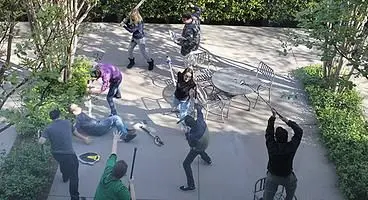Don’t worry, it’s not that they’re just out on day release, but it’s part of the ”iterations, adjustments” and implementing realistic moves, or at least that’s what they say it’s for…
This is the first time Obsidian are using the Unity engine for a game, which presents its own challenges for the team as they figure out all new tools and tech limitations.
”Many of our animators like to take reference of themselves acting out certain attacks, and it’s not unusual to walk by an animators office and see them growling, snarling, and stalking around while they try to work something out. You can usually recognize an animator’s office by the mountains of toy swords, shields, staffs, and guns they have lying around for any impromptu reference sessions that may come up. Once they’ve figured out how they want the animation to feel and look, they can sit down and really start animating,” explains Obsidian.
”The amount of time spent animating is smaller than one might think when compared to the time spent in iterations, adjustments, and actually successfully implementing the animations into the engine. When an animator feels like they have something ready for the game, the animations go into the game engine and off to the lead for review.”
”Since Pillars of Eternity is designed from an isometric view, the animators need to stay aware of the locked camera at all times when animating. Characters are also relatively smaller on the screen than they would be in another type of game. This means that animators need to focus on stronger poses and broader movements than they would use on a game with a first person or third person camera. The motions of the animations have to have a strong silhouette from as many angles as possible so that they can be read clearly at a distance.” Check out the full developer update for more.
Pillars of Eternity releases on PC later this year, distributed by Paradox Interactive, their new partner.





